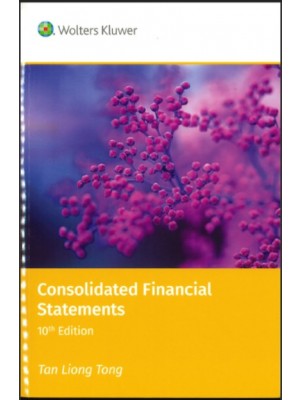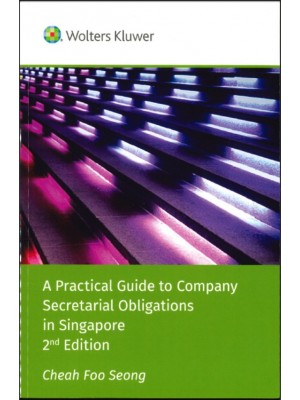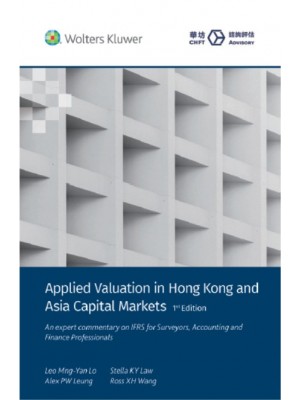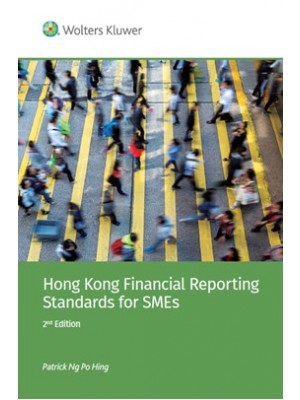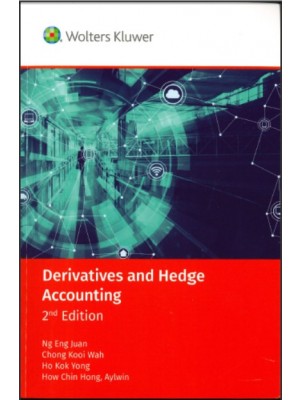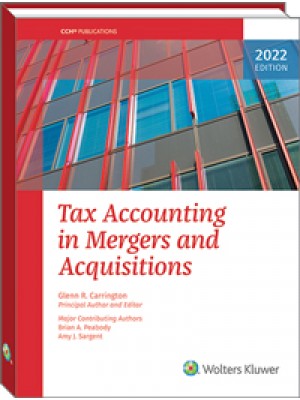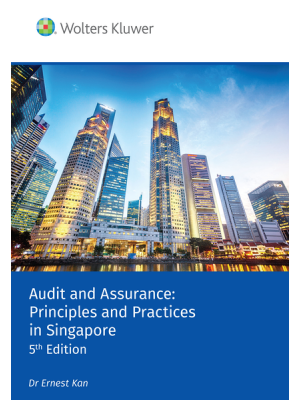Preface.
1 Products and Markets: Equities, Commodities, Exchange Rates, Forwards and Futures.
1.1 Introduction.
1.2 Equities.
1.2.1 Dividends.
1.2.2 Stock splits.
1.3 Commodities.
1.4 Currencies.
1.5 Indices.
1.6 The time value of money.
1.7 Fixed-income securities.
1.8 Inflation-proof bonds.
1.9 Forwards and futures.
1.9.1 A first example of no arbitrage.
1.10 More about futures.
1.10.1 Commodity futures.
1.10.2 FX futures.
1.10.3 Index futures.
1.11 Summary.
2 Derivatives.
2.1 Introduction.
2.2 Options.
2.3 Definition of common terms.
2.4 Payoff diagrams.
2.4.1 Other representations of value.
2.5 Writing options.
2.6 Margin.
2.7 Market conventions.
2.8 The value of the option before expiry.
2.9 Factors affecting derivative prices.
2.10 Speculation and gearing.
2.11 Early exercise.
2.12 Put-call parity.
2.13 Binaries or digitals.
2.14 Bull and bear spreads.
2.15 Straddles and strangles.
2.16 Risk reversal.
2.17 Butterflies and condors.
2.18 Calendar spreads.
2.19 LEAPS and FLEX.
2.20 Warrants.
2.21 Convertible bonds.
2.22 Over the counter options.
2.23 Summary.
3 The Binomial Model.
3.1 Introduction.
3.2 Equities can go down as well as up.
3.3 The option value.
3.4 Which part of our 'model' didn't we need?
3.5 Why should this 'theoretical price' be the 'market price'?
3.5.1 The role of expectations.
3.6 How did I know to sell ½ of the stock for hedging?
3.6.1 The general formula for ?
3.7 How does this change if interest rates are non-zero?
3.8 Is the stock itself correctly priced?
3.9 Complete markets.
3.10 The real and risk-neutral worlds.
3.10.1 Non-zero interest rates.
3.11 And now using symbols.
3.11.1 Average asset change.
3.11.2 Standard deviation of asset price change.
3.12 An equation for the value of an option.
3.12.1 Hedging.
3.12.2 No arbitrage.
3.13 Where did the probability p go?
3.14 Counter-intuitive?
3.15 The binomial tree.
3.16 The asset price distribution.
3.17 Valuing back down the tree.
3.18 Programming the binomial method.
3.19 The greeks.
3.20 Early exercise.
3.21 The continuous-time limit.
3.22 Summary.
4 The Random Behavior of Assets.
4.1 Introduction.
4.2 The popular forms of 'analysis'.
4.3 Why we need a model for randomness: Jensen's inequality.
4.4 Similarities between equities, currencies, commodities and indices.
4.5 Examining returns.
4.6 Timescales.
4.6.1 The drift.
4.6.2 The volatility.
4.7 Estimating volatility.
4.8 The random walk on a spreadsheet.
4.9 The Wiener process.
4.10 The widely accepted model for equities, currencies, commodities and indices.
4.11 Summary.
5 Elementary Stochastic Calculus.
5.1 Introduction.
5.2 A motivating example.
5.3 The Markov property.
5.4 The martingale property.
5.5 Quadratic variation.
5.6 Brownian motion.
5.7 Stochastic integration.
5.8 Stochastic differential equations.
5.9 The mean square limit.
5.10 Functions of stochastic variables and Itô's lemma.
5.11 Interpretation of Itô's lemma.
5.12 Itô and Taylor.
5.13 Itô in higher dimensions.
5.14 Some pertinent examples.
5.14.1 Brownian motion with drift.
5.14.2 The lognormal random walk.
5.14.3 A mean-reverting random walk.
5.14.4 And another mean-reverting random walk.
5.15 Summary.
6 The Black-Scholes Model.
6.1 Introduction.
6.2 A very special portfolio.
6.3 Elimination of risk: delta hedging.
6.4 No arbitrage.
6.5 The Black-Scholes equation.
6.6 The Black-Scholes assumptions.
6.7 Final conditions.
6.8 Options on dividend-paying equities.
6.9 Currency options.
6.10 Commodity options.
6.11 Expectations and Black-Scholes.
6.12 Some other ways of deriving the Black-Scholes equation.
6.12.1 The martingale approach 1.
6.12.2 The binomial model.
6.12.3 CAPM/utility.
6.13 No arbitrage in the binomial, Black-Scholes and 'other' worlds.
6.14 Forwards and futures.
6.14.1 Forward contracts.
6.15 Futures contracts.
6.15.1 When interest rates are known, forward prices and futures prices are the same.
6.16 Options on futures.
6.17 Summary.
7 Partial Differential Equations.
7.1 Introduction.
7.2 Putting the Black-Scholes equation into historical perspective.
7.3 The meaning of the terms in the Black-Scholes equation.
7.4 Boundary and initial/final conditions.
7.5 Some solution methods.
7.5.1 Transformation to constant coefficient diffusion equation.
7.5.2 Green's functions.
7.5.3 Series solution.
7.6 Similarity reductions.
7.7 Other analytical techniques.
7.8 Numerical solution.
7.9 Summary.
8 The Black-Scholes Formulæ and the 'Greeks'.
8.1 Introduction.
8.2 Derivation of the formulæ for calls, puts and simple digitals.
8.2.1 Formula for a call.
8.2.2 Formula for a put.
8.2.3 Formula for a binary call.
8.2.4 Formula for a binary put.
8.3 Delta.
8.4 Gamma.
8.5 Theta.
8.6 Speed.
8.7 Vega.
8.8 Rho.
8.9 Implied volatility.
8.10 A classification of hedging types.
8.10.1 Why hedge?
8.10.2 The two main classifications.
8.10.3 Delta hedging.
8.10.4 Gamma hedging.
8.10.5 Vega hedging.
8.10.6 Static hedging.
8.10.7 Margin hedgin.
8.10.8 Crash (Platinum) hedging.
8.11 Summary.
9 Overview of Volatility Modeling.
9.1 Introduction.
9.2 The different types of volatility.
9.2.1 Actual volatility.
9.2.2 Historical or realized volatility.
9.2.3 Implied volatility.
9.2.4 Forward volatility.
9.3 Volatility estimation by statistical means.
9.3.1 The simplest volatility estimate: constant volatility/moving window.
9.3.2 Incorporating mean reversion.
9.3.3 Exponentially weighted moving average.
9.3.4 A simple GARCH model.
9.3.5 Expected future volatility.
9.3.6 Beyond close-close estimators: range-based estimation of volatility.
9.4 Maximum likelihood estimation.
9.4.1 A simple motivating example: taxi numbers.
9.4.2 Three hats.
9.4.3 The math behind this: find the standard deviation.
9.4.4 Quants' salaries.
9.5 Skews and smiles.
9.5.1 Sensitivity of the straddle to skews and smiles.
9.5.2 Sensitivity of the risk reversal to skews and smiles.
9.6 Different approaches to modeling volatility.
9.6.1 To calibrate or not?
9.6.2 Deterministic volatility surfaces.
9.6.3 Stochastic volatility.
9.6.4 Uncertain parameters.
9.6.5 Static hedging.
9.6.6 Stochastic volatility and mean-variance analysis.
9.6.7 Asymptotic analysis of volatility.
9.7 The choices of volatility models.
9.8 Summary.
10 How to Delta Hedge.
10.1 Introduction.
10.2 What if implied and actual volatilities are different?
10.3 Implied versus actual, delta hedging but using which volatility?
10.4 Case 1: Hedge with actual volatility, s.
10.5 Case 2: Hedge with implied volatility, ˜s.
10.5.1 The expected profit after hedging using implied volatility.
10.5.2 The variance of profit after hedging using implied volatility.
10.6 Hedging with different volatilities.
10.6.1 Actual volatility = Implied volatility.
10.6.2 Actual volatility > Implied volatility.
10.6.3 Actual volatility < Implied volatility.
10.7 Pros and cons of hedging with each volatility.
10.7.1 Hedging with actual volatility.
10.7.2 Hedging with implied volatility.
10.7.3 Hedging with another volatility
10.8 Portfolios when hedging with implied volatility.
10.8.1 Expectation.
10.8.2 Variance.
10.8.3 Portfolio optimization possibilities.
10.9 How does implied volatility behave?
10.9.1 Sticky strike.
10.9.2 Sticky delta.
10.9.3 Time-periodic behavior.
10.10 Summary.
11 An Introduction to Exotic and Path-dependent Options.
11.1 Introduction.
11.2 Option classification.
11.3 Time dependence.
11.4 Cashflows.
11.5 Path dependence.
11.5.1 Strong path dependence.
11.5.2 Weak path dependence.
11.6 Dimensionality.
11.7 The order of an option.
11.8 Embedded decisions.
11.9 Classification tables.
11.10 Examples of exotic options.
11.10.1 Compounds and choosers.
11.10.2 Range notes.
11.10.3 Barrier options.
11.10.4 Asian options.
11.10.5 Lookback options.
11.11 Summary of math/coding consequences.
11.12 Summary.
12 Multi-asset Options.
12.1 Introduction.
12.2 Multidimensional lognormal random walks.
12.3 Measuring correlations.
12.4 Options on many underlyings.
12.5 The pricing formula for European non-path-dependent options on dividend-paying assets.
12.6 Exchanging one asset for another: a similarity solution.
12.7 Two examples.
12.8 Realities of pricing basket options.
12.8.1 Easy problems.
12.8.2 Medium problems.
12.8.3 Hard problems.
12.9 Realities of hedging basket options.
12.10 Correlation versus cointegration.
12.11 Summary.
13 Barrier Options.
13.1 Introduction.
13.2 Different types of barrier options.
13.3 Pricing methodologies.
13.3.1 Monte Carlo simulation.
13.3.2 Partial differential equations.
13.4 Pricing barriers in the partial differential equation framework.
13.4.1 'Out' barriers.
13.4.2 'In' barriers.
13.5 Examples.
13.5.1 Some more examples.
13.6 Other features in barrier-style options.
13.6.1 Early exercise.
13.6.2 Repeated hitting of the barrier.
13.6.3 Resetting of barrier.
13.6.4 Outside barrier options.
13.6.5 Soft barriers.
13.6.6 Parisian options.
13.7 Market practice: what volatility should I use?
13.8 Hedging barrier options.
13.8.1 Slippage costs.
13.9 Summary.
14 Fixed-income Products and Analysis: Yield, Duration and Convexity.
14.1 Introduction.
14.2 Simple fixed-income contracts and features.
14.2.1 The zero-coupon bond.
14.2.2 The coupon-bearing bond.
14.2.3 The money market account.
14.2.4 Floating rate bonds.
14.2.5 Forward rate agreements.
14.2.6 Repos.
14.2.7 STRIPS.
14.2.8 Amortization.
14.2.9 Call provision.
14.3 International bond markets.
14.3.1 United States of America.
14.3.2 United Kingdom.
14.3.3 Japan.
14.4 Accrued interest.
14.5 Day-count conventions.
14.6 Continuously and discretely compounded interest.
14.7 Measures of yield.
14.7.1 Current yield.
14.7.2 The yield to maturity (YTM) or internal rate of return (IRR).
14.8 The yield curve.
14.9 Price/yield relationship.
14.10 Duration.
14.11 Convexity.
14.12 An example.
14.13 Hedging.
14.14 Time-dependent interest rate.
14.15 Discretely paid coupons.
14.16 Forward rates and bootstrapping.
14.16.1 Discrete data.
14.16.2 On a spreadsheet.
14.17 Interpolation.
14.18 Summary.
15 Swaps.
15.1 Introduction.
15.2 The vanilla interest rate swap.
15.3 Comparative advantage.
15.4 The swap curve.
15.5 Relationship between swaps and bonds.
15.6 Bootstrapping.
15.7 Other features of swaps contracts.
15.8 Other types of swap.
15.8.1 Basis rate swap.
15.8.2 Equity swaps.
15.8.3 Currency swaps.
15.9 Summary.
16 One-factor Interest Rate Modeling.
16.1 Introduction.
16.2 Stochastic interest rates.
16.3 The bond pricing equation for the general model.
16.4 What is the market price of risk?
16.5 Interpreting the market price of risk, and risk neutrality.
16.6 Named models.
16.6.1 Vasicek.
16.6.2 Cox, Ingersoll & Ross.
16.6.3 Ho & Lee.
16.6.4 Hull & White.
16.7 Equity and FX forwards and futures when rates are stochastic.
16.7.1 Forward contracts.
16.8 Futures contracts.
16.8.1 The convexity adjustment.
16.9 Summary.
17 Yield Curve Fitting.
17.1 Introduction.
17.2 Ho & Lee.
17.3 The extended Vasicek model of Hull & White.
17.4 Yield-curve fitting: for and against.
17.4.1 For.
17.4.2 Against.
17.5 Other models.
17.6 Summary.
18 Interest Rate Derivatives.
18.1 Introduction.
18.2 Callable bonds.
18.3 Bond options.
18.3.1 Market practice.
18.4 Caps and floors.
18.4.1 Cap/floor parity.
18.4.2 The relationship between a caplet and a bond option.
18.4.3 Market practice.
18.4.4 Collars.
18.4.5 Step-up swaps, caps and floors.
18.5 Range notes.
18.6 Swaptions, captions and floortions.
18.6.1 Market practice.
18.7 Spread options.
18.8 Index amortizing rate swaps.
18.8.1 Other features in the index amortizing rate swap.
18.9 Contracts with embedded decisions.
18.10 Some examples.
18.11 More interest rate derivatives.
18.12 Summary.
19 The Heath, Jarrow & Morton and Brace, Gatarek & Musiela Models.
19.1 Introduction.
19.2 The forward rate equation.
19.3 The spot rate process.
19.3.1 The non-Markov nature of HJM.
19.4 The market price of risk.
19.5 Real and risk neutral.
19.5.1 The relationship between the risk-neutral forward rate drift and volatility.
19.6 Pricing derivatives.
19.7 Simulations.
19.8 Trees.
19.9 The Musiela parameterization.
19.10 Multi-factor HJM.
19.11 Spreadsheet implementation.
19.12 A simple one-factor example: Ho & Lee.
19.13 Principal Component Analysis.
19.13.1 The power method.
19.14 Options on equities, etc.
19.15 Non-infinitesimal short rate.
19.16 The Brace, Gatarek & Musiela model.
19.17 Simulations.
19.18 PVing the cashflows.
19.19 Summary.
20 Investment Lessons from Blackjack and Gambling.
20.1 Introduction.
20.2 The rules of blackjack.
20.3 Beating the dealer.
20.3.1 Summary of winning at blackjack.
20.4 The distribution of profit in blackjack.
20.5 The Kelly criterion.
20.6 Can you win at roulette?
20.7 Horse race betting and no arbitrage.
20.7.1 Setting the odds in a sporting game.
20.7.2 The mathematics.
20.8 Arbitrage.
20.8.1 How best to profit from the opportunity?
20.9 How to bet.
20.10 Summary.
21 Portfolio Management.
21.1 Introduction.
21.2 Diversification.
21.2.1 Uncorrelated assets.
21.3 Modern portfolio theory.
21.3.1 Including a risk-free investment.
21.4 Where do I want to be on the efficient frontier?
21.5 Markowitz in practice.
21.6 Capital Asset Pricing Model.
21.6.1 The single-index model.
21.6.2 Choosing the optimal portfolio.
21.7 The multi-index model.
21.8 Cointegration.
21.9 Performance measurement.
21.10 Summary.
22 Value at Risk.
22.1 Introduction.
22.2 Definition of Value at Risk.
22.3 VaR for a single asset.
22.4 VaR for a portfolio.
22.5 VaR for derivatives.
22.5.1 The delta approximation.
22.5.2 The delta/gamma approximation.
22.5.3 Use of valuation models.
22.5.4 Fixed-income portfolios.
22.6 Simulations.
22.6.1 Monte Carlo.
22.6.2 Bootstrapping.
22.7 Use of VaR as a performance measure.
22.8 Introductory Extreme Value Theory.
22.8.1 Some EVT results.
22.9 Coherence.
22.10 Summary.
23 Credit Risk.
23.1 Introduction.
23.2 The Merton model: equity as an option on a company's assets.
23.3 Risky bonds.
23.4 Modeling the risk of default.
23.5 The Poisson process and the instantaneous risk of default.
23.5.1 A note on hedging.
23.6 Time-dependent intensity and the term structure of default.
23.7 Stochastic risk of default.
23.8 Positive recovery.
23.9 Hedging the default.
23.10 Credit rating.
23.11 A model for change of credit rating.
23.12 Copulas: pricing credit derivatives with many underlyings.
23.12.1 The copula function.
23.12.2 The mathematical definition.
23.12.3 Examples of copulas.
23.13 Collateralized debt obligations.
23.14 Summary.
24 RiskMetrics and CreditMetrics.
24.1 Introduction.
24.2 The RiskMetrics datasets.
24.3 Calculating the parameters the RiskMetrics way.
24.3.1 Estimating volatility.
24.3.2 Correlation.
24.4 The CreditMetrics dataset.
24.4.1 Yield curves.
24.4.2 Spreads.
24.4.3 Transition matrices.
24.4.4 Correlations.
24.5 The CreditMetrics methodology.
24.6 A portfolio of risky bonds.
24.7 CreditMetrics model outputs.
24.8 Summary.
25 CrashMetrics.
25.1 Introduction.
25.2 Why do banks go broke?
25.3 Market crashes.
5.4 CrashMetrics.
25.5 CrashMetrics for one stock.
25.6 Portfolio optimization and the Platinum hedge.
25.6.1 Other 'cost' functions.
25.7 The multi-asset/single-index mode.
25.7.1 Assuming Taylor series for the moment.
25.8 Portfolio optimization and the Platinum hedge in the multi-asset model.
25.8.1 The marginal effect of an asset.
5.9 The multi-index model.
25.10 Incorporating time value.
25.11 Margin calls and margin hedging.
25.11.1 What is margin?
25.11.2 Modeling margin.
25.11.3 The single-index model.
5.12 Counterparty risk
25.13 Simple extensions to CrashMetrics.
25.14 The CrashMetrics Index (CMI).
25.15 Summary
26 Derivatives **** Ups.
26.1 Introduction.
26.2 Orange County.
26.3 Proctor and Gamble.
26.4 Metallgesellschaft.
26.4.1 Basis risk.
26.5 Gibson Greetings.
26.6 Barings.
26.7 Long-Term Capital Management.
26.8 Summary.
27 Overview of Numerical Methods.
27.1 Introduction.
27.2 Finite-difference methods.
27.2.1 Efficiency.
27.2.2 Program of study.
27.3 Monte Carlo methods.
27.3.1 Efficiency.
27.3.2 Program of study.
27.4 Numerical integration.
27.4.1 Efficiency.
27.4.2 Program of study.
27.5 Summary.
28 Finite-difference Methods for One-factor Models.
28.1 Introduction.
28.2 Grids.
28.3 Differentiation using the grid.
28.4 Approximating ?
28.5 Approximating ?
28.6 Approximating +.
28.7 Example.
28.8 Bilinear interpolation.
28.9 Final conditions and payoffs.
28.10 Boundary conditions.
28.11 The explicit finite-difference method.
28.11.1 The Black-Scholes equation.
28.11.2 Convergence of the explicit method.
28.12 The Code #1: European option.
28.13 The Code #2: American exercise.
28.14 The Code #3: 2-D output.
28.15 Upwind differencing.
28.16 Summary.
29 Monte Carlo Simulation.
29.1 Introduction.
29.2 Relationship between derivative values and simulations: equities, indices, currencies, commodities.
29.3 Generating paths.
29.4 Lognormal underlying, no path dependency.
29.5 Advantages of Monte Carlo simulation.
29.6 Using random numbers.
29.7 Generating Normal variables.
29.7.1 Box-Muller.
29.8 Real versus risk neutral, speculation versus hedging.
29.9 Interest rate products.
29.10 Calculating the greeks.
29.11 Higher dimensions: Cholesky factorization.
29.12 Calculation time.
29.13 Speeding up convergence.
29.13.1 Antithetic variables.
29.13.2 Control variate technique.
29.14 Pros and cons of Monte Carlo simulations.
29.15 American options.
29.16 Longstaff & Schwartz regression approach for American options.
29.17 Basis functions.
29.18 Summary.
30 Numerical Integration.
30.1 Introduction.
30.2 Regular grid.
30.3 Basic Monte Carlo integration.
30.4 Low-discrepancy sequences.
30.5 Advanced techniques.
30.6 Summary.
A All the Math You Need. . . and No More (An Executive Summary).
A.1 Introduction .
A.2 e.
A.3 log.
A.4 Differentiation and Taylor series.
A.5 Differential equations.
A.6 Mean, standard deviation and distributions.
A.7 Summary.
B Forecasting the Markets? A Small Digression.
B.1 Introduction.
B.2 Technical analysis.
B.2.1 Plotting.
B.2.2 Support and resistance.
B.2.3 Trendlines.
B.2.4 Moving averages.
B.2.5 Relative strength.
B.2.6 Oscillators.
B.2.7 Bollinger bands.
B.2.8 Miscellaneous patterns.
B.2.9 Japanese candlesticks.
B.2.10 Point and figure charts.
B.3 Wave theory.
B.3.1 Elliott waves and Fibonacci numbers.
B.3.2 Gann charts.
B.4 Other analytics.
B.5 Market microstructure modeling.
B.5.1 Effect of demand on price.
B.5.2 Combining market microstructure and option theory.
B.5.3 Imitation.
B.6 Crisis prediction.
B.7 Summary.
C A Trading Game.
C.1 Introduction.
C.2 Aims.
C.3 Object of the game.
C.4 Rules of the game.
C.5 Notes.
C.6 How to fill in your trading sheet.
C.6.1 During a trading round.
C.6.2 At the end of the game.
D Contents of CD accompanying Paul Wilmott Introduces Quantitative Finance, second edition.
E What you get if (when) you upgrade to PWOQF2.
Bibliography.
Index.











